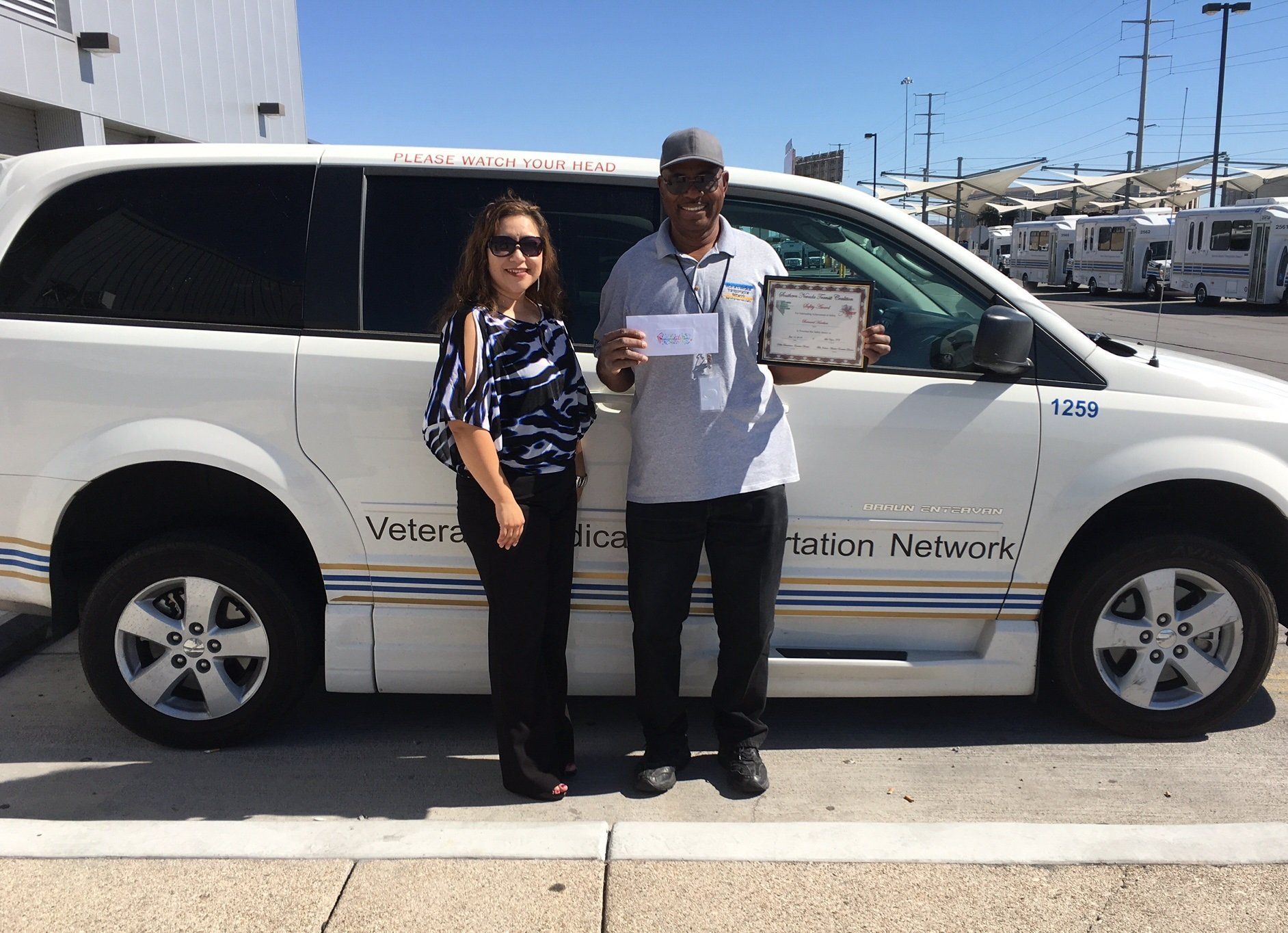SNTC’s program launched in fall 2015, with the goal of improving safety on their vehicles, decreasing accidents and incidents, and thereby reducing the agency’s insurance costs. What makes their initiative work so well is that it combines a safety and security program with refresher training and staff appreciation. By choosing the drivers randomly and rewarding those with successful reviews, the program takes what could be seen by drivers as a punitive surveillance program and turns it into an opportunity for improvement and recognition.
Some agency background; SNTC provides fixed route, demand response, and commuter services in seven rural communities outside of Las Vegas. They have 85 drivers with three different operations hubs. The program took about seven weeks to plan and launch. SNTC already had cameras on all vehicles, although previously the videos were reviewed only after incidents, accidents, or customer complaints. Now the videos are being used proactively.
The new program works like this:
- Every month multiple drivers' names are randomly selected at each SNTC location (like with drug and alcohol testing, where the same driver could get picked two months in a row, or could never be picked).
- Surveillance videos for those drivers are then reviewed, with the reviewer looking for certain criteria.
- If the driver made mistakes, constructive feedback is provided during a review. If the mistake is serious enough, management is informed immediately, and the appropriate level of disciplinary action is taken. If the driver did well, they, too, receive input on room for improvement during a review.
- Finally, management selects the monthly Safe Driver Award winner for each location, presenting them with a $50 gift card and a personalized, framed certificate (costing around $1.50) at the monthly staff meeting. Then they boast about the winning driver and all the wonderful things observed on the video.
Some key elements of the program are the positive tone and the mutual benefit to the staff, with the objectives of improving and recognizing drivers fitting into the overall goal of safety for both drivers and passengers.
Another key element is the fairness of the program, with the random selection process and an impartial video reviewer. SNTC hired a new Surveillance Specialist to review video for approximately 30 hours per week. They made sure he had no ties to SNTC staff and keep him separate from the other employees. He is not permitted to socialize with other staff, on or off the property, in order to prevent favoritism.
Although the results are not quantifiable quite yet, SNTC has noticed a reduction in incidents, customer complaints, and disciplinary actions. The drivers are more careful and aware of their surroundings, using the defensive driving skills they were trained on. Staff morale has also increased and monthly safety meetings are a lot more exciting!
Our thanks to Deb Dauenhauer, SNTC Executive Director and National RTAP Review Board Member, for providing the information for this article. If you have any questions about their Safety Assurance and Award Program and how you could implement a similar program at your agency, Deb would be happy to help. Contact her at sntced@gmail.com.




